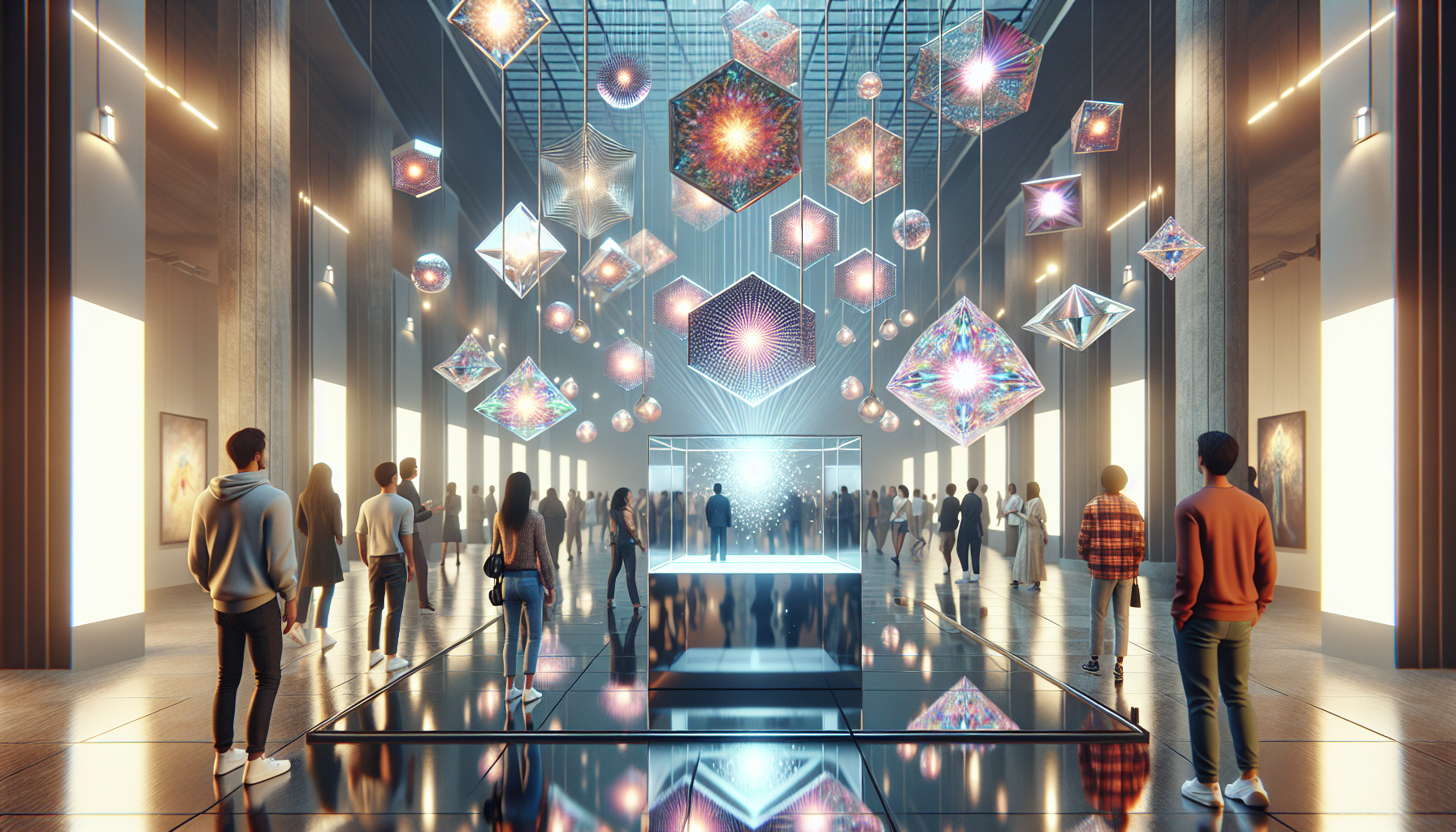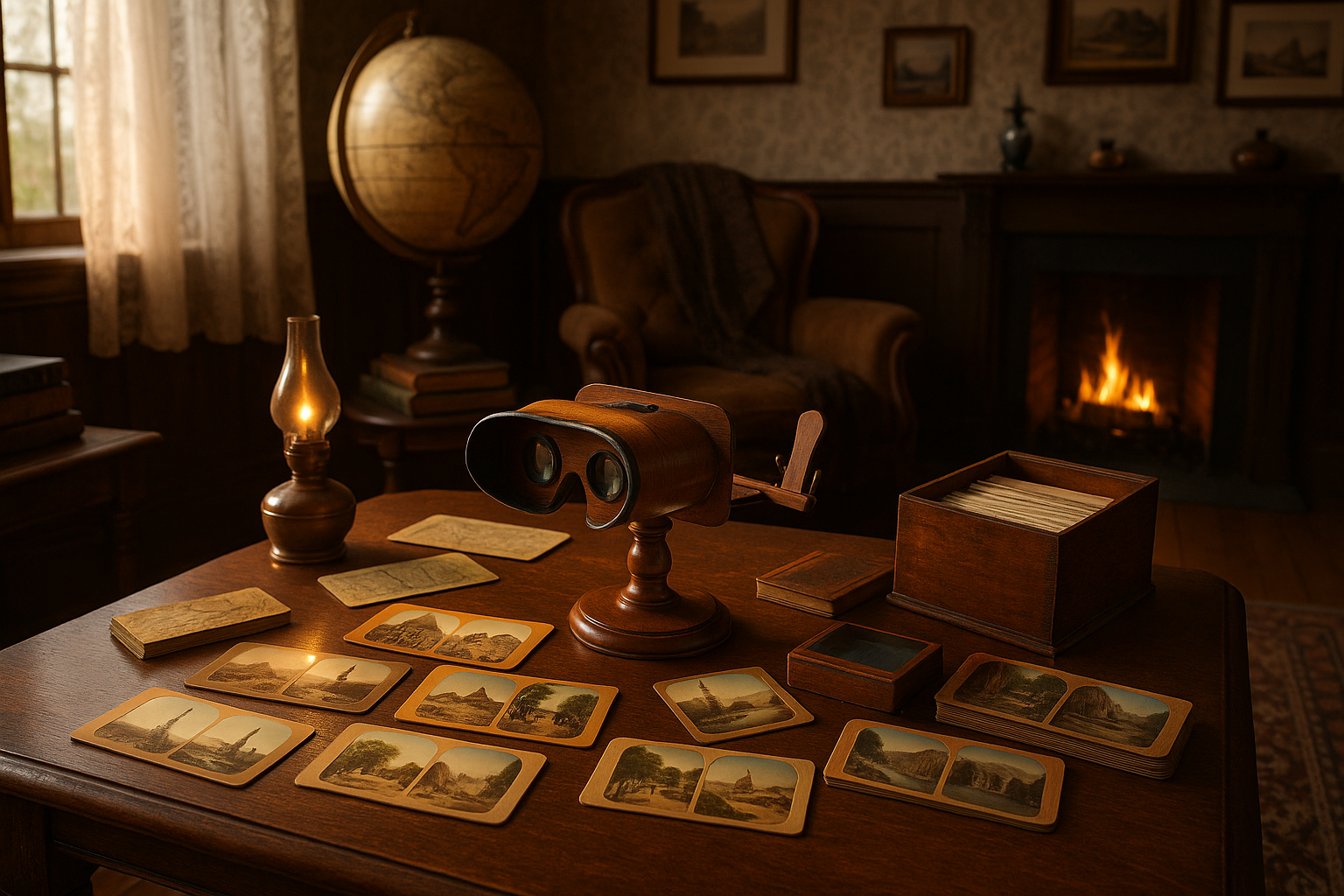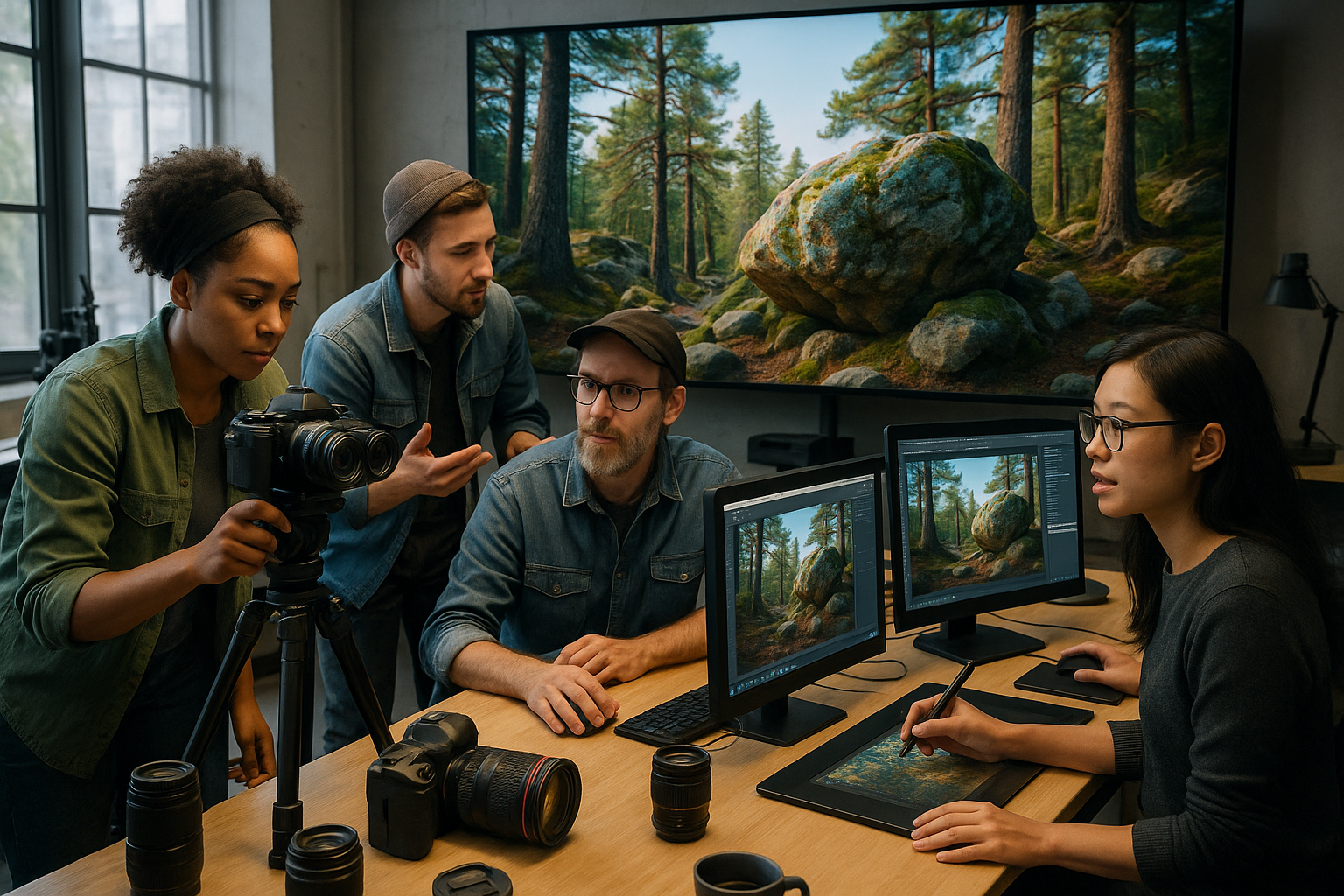In a world dominated by the pursuit of knowledge and understanding, there remains a realm where reality and perception dance in an intricate ballet, captivating our senses and challenging our comprehension: the world of optical effects and illusions. These fascinating phenomena invite us to question what we see and perceive, offering a glimpse into the magical interplay between our minds and the visual stimuli that surround us. 🌀 In this article, we embark on an extraordinary journey to uncover the secrets behind these visual wonders, exploring their scientific underpinnings, psychological implications, and the sheer artistry involved in their creation.
From the mesmerizing mirage of a distant oasis shimmering in the desert heat to the enchanting patterns of a kaleidoscope, optical illusions have held humanity spellbound for centuries. They serve as a reminder of the brain’s remarkable ability to interpret and sometimes misinterpret the world around us. But what exactly are optical illusions? At their core, these phenomena are perceptual experiences that differ from objective reality, often exploiting the quirks of human perception to create a deceptive or misleading image. By delving into the mechanics of these illusions, we gain insight into the complex processes our brains undertake to construct the reality we perceive.
As we venture further into this article, we will explore a myriad of optical effects, each with its own unique characteristics and captivating qualities. We will begin by examining the science behind optical illusions, delving into how our brains process visual information and the ways in which these processes can be manipulated. Next, we will explore the psychological aspects, discussing how cognitive biases and previous experiences shape our perception of illusions. We will also take a closer look at the role of art and technology in creating illusions that astound and inspire, highlighting the work of artists and scientists who push the boundaries of what is visually possible. 🌈
Moreover, this exploration would not be complete without a glimpse into the historical context of optical illusions, tracing their roots from ancient times to modern-day applications. We will uncover how cultures throughout history have utilized these effects in art, architecture, and storytelling, revealing the timeless allure and universal appeal of optical deception. This journey through time will underscore the idea that while technology may evolve, the human fascination with visual trickery remains a constant thread woven through the fabric of our cultural tapestry.
Prepare to be amazed as we unravel the mysteries of optical effects and illusions that will leave you questioning the very nature of perception. Whether you are a seasoned enthusiast or a curious newcomer to the world of optical illusions, this article promises to enlighten and entertain. By the end of our exploration, you will have not only a deeper appreciation for the magic behind these visual phenomena but also a greater understanding of the complex relationship between reality and perception. So, open your mind and allow your eyes to deceive you as we embark on this captivating journey through the world of optical illusions. 👁️✨
The Science Behind Optical Illusions
Optical illusions have fascinated humans for centuries, from the ancient Greeks who crafted visual puzzles to the modern artists and scientists who study the phenomenon today. An optical illusion occurs when our brain and eyes attempt to communicate, but the signals get misinterpreted along the way, leading to an image that appears different from reality. The science behind these illusions is deeply rooted in the workings of our visual perception system, which involves a complex interplay between light, eye anatomy, and neural pathways. Our brains process information quickly and efficiently, often using shortcuts that can lead to perceptual errors—hence the magic of illusions.
Our perception of reality is formed through a complex process involving light entering our eyes, getting processed by the retina, and then interpreted by the brain. This process is so rapid and efficient that we’re usually unaware of the errors that can occur. For instance, certain optical illusions play with light and shadow to trick our brains into seeing three dimensions where only two exist. Others manipulate color contrasts or geometric shapes to create movement in static images. These phenomena highlight not only the marvels of human cognition but also the limitations of our sensory systems.
Visual perception is influenced by context, previous experiences, and the brain’s innate desire to find patterns and meaning. This is why optical illusions can be so compelling; they exploit these tendencies, creating images that defy our expectations. The study of optical illusions isn’t just an academic pursuit; it has practical applications in fields ranging from neuroscience to art and design. Understanding how illusions work can improve user experience in digital interfaces, enhance teaching methods in education, and inspire innovation in visual arts. To grasp the magic behind optical illusions, we must delve deeper into the mechanics of sight and perception.
Types of Optical Illusions
Optical illusions can be categorized into several types, each with distinct characteristics and effects. One common classification divides them into literal illusions, physiological illusions, and cognitive illusions. Literal illusions create images different from the objects that make them up, such as the famous “impossible objects” that appear three-dimensional. These illusions rely heavily on our brain’s interpretation of spatial relationships and depth cues.
Physiological illusions occur when the eyes and brain experience excessive stimulation from bright lights, movement, or patterns. This stimulation can cause afterimages or motion illusions, where static images appear to move. A classic example is the “rotating snakes” illusion, where circular patterns seem to spin. These illusions highlight how our sensory systems can become overstressed, leading to perceptual anomalies.
Cognitive illusions are perhaps the most intriguing, as they involve higher-order processing by the brain. These illusions rely on the brain’s assumptions and interpretations to trick us into seeing something that isn’t there. The “Kanizsa triangle” is a well-known cognitive illusion where our mind perceives a triangle that doesn’t exist, created by the arrangement of other shapes. Understanding these types of illusions enhances our comprehension of how we perceive the world around us.
Comparative Analysis of Illusion Types
| Type of Illusion | Characteristics | Examples |
|---|---|---|
| Literal Illusions | Create images different from reality | Impossible Objects |
| Physiological Illusions | Result from excessive sensory stimulation | Rotating Snakes |
| Cognitive Illusions | Involve complex brain processing | Kanizsa Triangle |
Optical Illusions in Art and Culture
The allure of optical illusions extends beyond science and into the realms of art and culture. Artists have long harnessed the power of illusions to create visually striking works that challenge viewers’ perceptions. The Op Art movement, for example, emerged in the 1960s with artists like Bridget Riley and Victor Vasarely, who used geometric patterns to create dynamic, illusionary effects. These artworks often seem to pulsate or move, despite being static, engaging viewers in an interactive experience.
Incorporating illusions into art allows artists to play with viewers’ perception, creating a sense of wonder and intrigue. This technique is not limited to paintings; it can be found in architecture, sculpture, and even digital media. For instance, the “Ames Room” is an architectural illusion that manipulates perspective to make objects appear larger or smaller than they are. Similarly, trompe-l’œil murals employ hyper-realistic painting techniques to trick the eye into seeing three-dimensional spaces on flat surfaces.
Beyond individual artworks, optical illusions are woven into cultural narratives and folklore. Many cultures have tales or myths involving illusions or shape-shifting beings that deceive the eye. These stories reflect a fascination with the idea that reality may not always be what it seems, resonating with the fundamental principles of optical illusions. By exploring illusions in art and culture, we gain insight into the universal human experience of questioning and reinterpreting what we see.
Video Exploration: Art and Optical Illusions
To see how artists leverage illusions in their work, watch this enlightening video: “The Magic of Optical Illusions in Art” by Art Insider. Discover how illusions are masterfully crafted to engage and astonish.
Applications of Optical Illusions in Modern Technology
Optical illusions are not just curiosities; they have practical applications in modern technology and design. One of the most notable areas is in user interface and experience design, where illusions can be used to enhance the usability and aesthetics of digital products. For instance, techniques that create depth perception on flat screens can make interfaces more intuitive and visually appealing, improving user engagement.
In virtual and augmented reality, optical illusions are integral to creating immersive experiences. Developers use illusions to construct virtual worlds that feel tangible and interactive, despite being entirely digital. This involves manipulating perspective, lighting, and spatial relationships to trick the brain into perceiving depth and movement. Such applications showcase the potential of illusions to transform how we interact with technology.
Moreover, optical illusions are employed in safety and navigation systems. Road markings that appear three-dimensional, for example, can alert drivers to hazards or guide them safely through complex intersections. This use of illusions demonstrates their ability to influence behavior and enhance safety. As technology continues to evolve, the role of optical illusions in shaping our interactions with digital and physical environments is likely to expand, offering new possibilities for innovation and creativity.
- Interactive User Interfaces
- Virtual Reality Environments
- Safety and Navigation Systems

Conclusion
Conclusion: Unveiling the Magic of Optical Effects and Illusions
As we draw the curtain on our exploration of optical effects and illusions, it’s essential to revisit the key points that have painted a vivid picture of this fascinating world. Throughout this article, we’ve journeyed through the intricate dance of light and perception, uncovering the layers of complexity that define optical illusions. From the mesmerizing Moiré patterns to the bewildering Penrose stairs, each illusion challenges our understanding and perception of reality.
At the heart of optical illusions lies the interplay between the eyes and the brain—a relationship that highlights the nuances of human cognition. We’ve seen how artists and scientists have harnessed this interplay to create effects that not only captivate but also educate. The Ames Room, for example, plays with perspective to alter our perception of size, while the Rubin Vase oscillates between two distinct images, demonstrating the fluidity of visual perception. These examples underscore a broader theme: our perception of reality is not always as straightforward as it seems.
Optical effects are not just academic curiosities; they have practical applications that impact various fields. In medicine, illusions help in diagnosing and treating visual and neurological disorders. In technology, they enhance virtual reality experiences, creating immersive environments that blur the line between the virtual and the real. Even in everyday life, understanding optical illusions can foster a deeper appreciation of art and design, enriching our interaction with the world around us.
The cultural significance of optical illusions cannot be overstated. From ancient art to contemporary installations, illusions have been used to evoke wonder and provoke thought. They remind us of the subjectivity inherent in perception, encouraging a broader understanding of diverse viewpoints. The artistic use of optical effects challenges us to question the reality we often take for granted, urging us to see the world through a more critical lens.
As we reflect on the magic of optical illusions, it’s crucial to recognize their power to inspire. These phenomena invite curiosity, challenging us to explore the boundaries of our understanding. They serve as a reminder of the beauty of inquiry—the joy of unraveling mysteries that lie just beyond the grasp of our immediate perception.
In concluding this exploration, I urge you to carry forward this sense of wonder. Share these insights with others, sparking conversations that delve into the marvels of perception. Engage with art and technology through the lens of optical effects, applying what you’ve learned to appreciate the world from new perspectives. Comment below with your thoughts and experiences—your insights enrich the dialogue and contribute to a collective understanding of this fascinating subject.
For those eager to dive deeper, numerous resources are available to expand your knowledge. Websites such as Scientific American and Optical Illusions & Visual Phenomena offer a wealth of information and interactive experiences to further your exploration. Additionally, the provides a comprehensive database of illusions, serving as a valuable tool for enthusiasts and researchers alike.
In a world brimming with distractions, the study of optical effects and illusions serves as a beacon of focused inquiry. It invites us to pause, to observe, and to appreciate the subtleties that define our perception. As you continue to explore this enchanting realm, may you find inspiration not only in the illusions themselves but in the boundless curiosity they ignite. Together, let’s unveil the magic of perception, embracing the awe that comes from understanding the extraordinary within the ordinary.
Toni Santos is a visual historian and artisan whose creative lens is captivated by the forgotten marvels of antique optical devices. Through his thoughtful storytelling, Toni revives the instruments that once transformed light into wonder—camera obscuras, magic lanterns, kaleidoscopes, and other ingenious tools that shaped our earliest visual imaginations.
His journey is rooted in a fascination with how humans have long sought to bend, reflect, and reveal the unseen. Whether tracing the mechanical poetry of 19th-century projectors or illustrating the tactile elegance of early lenses, Toni’s work invites us to see vision itself as an evolving art form.
Blending handcrafted design with historical inquiry, Toni brings to life the material soul of these devices—celebrating not just how they functioned, but what they meant. His creations and curated stories illuminate a world where science, illusion, and beauty were intricately linked through glass and brass.
As the curator of Vizovex, Toni shares detailed studies, reconstructed artifacts, and immersive content that help others rediscover the origins of visual technology and the magic of analog perception.
His work is a tribute to:
The craftsmanship behind early visual instruments
The wonder of seeing through the eyes of another century
The intersection of optics, art, and imagination
Whether you’re a collector, a designer, or someone drawn to the lost poetry of vision, Toni welcomes you into a world where light is a storyteller—one prism, one lens, one forgotten invention at a time.





